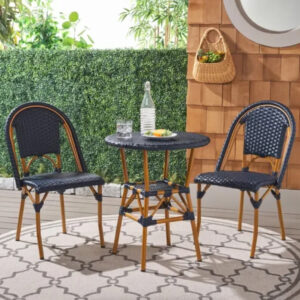
Five years ago, Vinted was little more than a digital footnote in the sprawling landscape of the UK’s resale economy. While its footprint across continental Europe—particularly in markets like France, Germany, and the Netherlands—was already firm, its presence in Britain was comparatively muted. Struggling to distinguish itself from more established platforms like Depop, eBay, and Facebook Marketplace, Vinted’s model seemed ill-suited for the British market, where peer-to-peer trust, postal systems, and payment preferences were slow to shift. Yet today, Vinted has gone from fringe contender to a central pillar of the UK’s secondhand revolution. What happened in between wasn’t merely a rise in market share; it was a cultural recalibration.
To walk into any British post office in 2025 is to witness the quiet omnipresence of Vinted: parcels piled high behind counters, QR codes flashing across phone screens, and queues of users clutching re-sold clothing like it’s currency. That’s because, for many, it now is.
A Platform Built on Frictionless Simplicity
Vinted’s ascent in Britain can be traced in part to what initially made it seem like an outsider: its simplicity. Where competitors like Depop often blurred the line between e-commerce and social media, Vinted stripped the experience down to its transactional essence. There are no followers, likes, or curated profiles to maintain. Instead, users are offered the digital equivalent of a massive community car boot sale—upload your item, accept offers, ship it off. Done.
For British users, long used to the performative labor of selling on Depop—crafting editorial-grade product photos, responding to comments, managing follower growth—Vinted’s no-frills approach felt revolutionary. It democratized secondhand fashion in a way few platforms had. Sellers didn’t have to be style influencers or micro-brands to succeed. They just needed a smartphone, a half-decent photo, and something to let go of.
Even more crucially, Vinted eliminated what had been the biggest pain point of secondhand platforms in the UK: shipping. The platform’s integrated prepaid labels, partnership with major delivery companies, and now-ubiquitous drop-off system meant that even someone with no printing equipment or e-commerce know-how could participate. And once users saw money flowing in for their discarded clothes—without fees on sales—it became addictive.
The Cultural Turn Toward Circular Fashion
Of course, Vinted’s meteoric rise wasn’t happening in a vacuum. The UK, like much of the Western world, has been in the throes of a secondhand awakening. Fueled by growing awareness of fashion’s environmental cost, skyrocketing retail prices, and a generational preference for ethical consumption, the appetite for resale is no longer a fringe phenomenon. In fact, the resale economy is projected to overtake fast fashion globally by the end of the decade.
For Gen Z consumers especially—those who came of age amidst climate anxiety and financial instability—buying secondhand is not only normal, it’s desirable. It aligns with their values, saves money, and helps them build distinctive, personal wardrobes in a world oversaturated with sameness. Vinted doesn’t sell aspiration; it sells access. And in this climate, access is everything.
Moreover, Vinted’s transparency has made it more appealing than traditional resale models. Prices are determined by individual sellers rather than algorithmic trends or stylized inflation. There’s a refreshing ordinariness to the transactions: no gatekeeping, no arbitrary pricing spikes, just real people listing real things.
Depop vs. Vinted: A Shift in Power
To fully understand Vinted’s dominance in the UK market, it’s necessary to examine the contrast with its primary cultural predecessor: Depop. While Vinted now owns the casual resale space, Depop, once a millennial darling, finds itself increasingly niche—home to stylists, trendsetters, and resellers who operate more like boutique brands than everyday users.
The distinction matters. Depop sellers are still chasing aesthetics. Vinted users are chasing utility. This divergence has created two fundamentally different user experiences: one performative, curated, and often exclusionary; the other pragmatic, raw, and inclusive. In that light, Vinted didn’t just enter the market—it redefined it.
That’s not to say Depop is obsolete. It remains the platform of choice for vintage curators and fashion-forward thrifters who trade in high-margin resale. But for the average British household looking to declutter or earn passive income on the side, Vinted is the default.
From Domestic Habit to Export Strategy
The real indicator of Vinted’s success in the UK isn’t just adoption—it’s assimilation. Vinted isn’t a trend. It’s a household habit. Its name is casually invoked in WhatsApp groups, parenting forums, and student dorms. Users no longer ask “Have you heard of Vinted?” but “Are you on Vinted?”
This level of cultural penetration has opened up broader possibilities for the brand. Where once Vinted’s ambitions were confined to the peer-to-peer market, it now flirts with a larger role in Europe’s digital economy. With its UK base growing exponentially and revenues climbing, Vinted is exploring partnerships with brands and logistics firms, potentially acting as a bridge between legacy retailers and the resale space.
In some ways, Vinted is poised to do for fashion resale what Spotify did for music streaming: make it so seamless, ubiquitous, and normalized that other models seem clunky by comparison.
Challenges Ahead: Oversaturation and Value Dilution
Yet Vinted’s growth doesn’t come without growing pains. With an influx of users, the platform now faces issues of oversaturation. Some buyers report difficulty finding quality items amid the sheer volume of listings. Others lament rising expectations for near-perfect condition, which undercuts the purpose of secondhand fashion as a circular system of extended life cycles, not perfection.
Additionally, as more small-scale resellers flood the site, some critics argue that Vinted is becoming a platform for professional flippers rather than everyday consumers. This risks replicating the very hierarchies it once dissolved—where those with time, aesthetic acumen, and sourcing skills dominate, and casual sellers get buried.
Then there are the logistical growing pains: parcel losses, communication breakdowns, and disputes between buyers and sellers that now unfold on forums and TikTok confessionals. Vinted will need to invest in customer service, trust systems, and fraud protection if it wants to avoid the fate of so many peer-to-peer platforms that grew too quickly to manage.
The Psychological Shift: From Ownership to Circulation
At the heart of Vinted’s rise lies a deeper psychological shift around clothing and ownership. Where once wardrobes were repositories of identity and accumulation, they are now portals of circulation. To own something is no longer the end goal; the goal is mobility—how fast can something move from one closet to the next, how fluidly can an item live across multiple bodies and cities.
This shift is especially profound in the context of Britain’s historical relationship with consumption. From the heyday of fast fashion on Oxford Street to the reign of High Street brands like Topshop and Miss Selfridge, the UK once embraced mass-produced newness as a form of class mobility. Vinted disrupts that paradigm. It suggests that mobility isn’t just about buying new—it’s about moving things on.
And in this way, it dovetails with Britain’s post-pandemic reckoning: with minimalism, with sustainability, with economic precarity. Clothing, once a marker of status and novelty, has become a form of soft currency. The Vinted user isn’t just a seller; they’re a participant in a decentralized economy of exchange.
Impression
In just five years, Vinted has done more than gain market share in the UK—it has changed the national texture of fashion consumption. It has turned wardrobes into micro-economies, sellers into cultural participants, and post offices into logistical junctions of everyday trade. In doing so, it has not only carved out a space in Britain’s retail consciousness but rewritten its rules.
Secondhand fashion in the UK no longer sits at the margins. Thanks to Vinted, it now occupies the center. And as fashion continues to reckon with its environmental, economic, and ethical consequences, platforms like Vinted don’t just seem relevant—they feel necessary.
What once looked like a quiet digital marketplace from Lithuania is now a defining force in British consumer culture. Vinted hasn’t just entered the UK. It has embedded itself into the very practice of getting dressed.
No comments yet.








